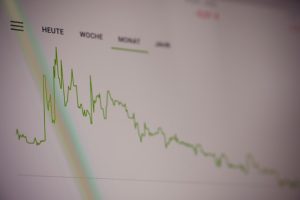Support and resistance are two of the most important concepts in forex trading. They are critical components of technical analysis, which is a method of analyzing financial markets based on charts and mathematical calculations. Understanding these concepts is essential for any trader who wants to make informed decisions about when to enter and exit trades.
Support is a price level at which demand for an asset is strong enough to prevent the price from falling further. It is the level at which buyers are willing to step in and purchase the asset, creating a floor or a support level. This can be seen on a chart as a horizontal line that connects multiple lows over a period of time. As the price approaches the support level, it may bounce back up, indicating that the support level is holding. If the price breaks below the support level, it may continue to fall until it finds a new support level.
Resistance, on the other hand, is a price level at which supply for an asset is strong enough to prevent the price from rising further. It is the level at which sellers are willing to step in and sell the asset, creating a ceiling or a resistance level. This can be seen on a chart as a horizontal line that connects multiple highs over a period of time. As the price approaches the resistance level, it may bounce back down, indicating that the resistance level is holding. If the price breaks above the resistance level, it may continue to rise until it finds a new resistance level.
Support and resistance levels are not exact prices but rather price zones. They are determined by the collective actions of buyers and sellers in the market. The more times a price level is tested and holds, the stronger it becomes. Traders use these levels to identify potential entry and exit points for their trades.
There are several ways that traders can use support and resistance levels in their trading. One of the most common is to use them as levels for placing stop-loss orders. A stop-loss order is an order to close a trade if the price reaches a certain level. By placing a stop-loss order just below a support level, traders can limit their losses if the price does break below the support level. Similarly, by placing a stop-loss order just above a resistance level, traders can limit their losses if the price does break above the resistance level.
Traders can also use support and resistance levels to identify potential trade opportunities. If a trader sees that the price is approaching a strong support level, they may look for buying opportunities as the price bounces off the support level. If a trader sees that the price is approaching a strong resistance level, they may look for selling opportunities as the price bounces off the resistance level.
Support and resistance levels can also be used as targets for profit-taking. If a trader is in a long position and the price approaches a resistance level, they may take profits as the price bounces off the resistance level. If a trader is in a short position and the price approaches a support level, they may take profits as the price bounces off the support level.
In conclusion, support and resistance are critical concepts in forex trading. They are price levels at which demand and supply for an asset are strong enough to prevent the price from falling further or rising further. Traders use these levels to identify potential entry and exit points for their trades, as well as to place stop-loss orders and take profits. By understanding and using support and resistance levels in their trading, traders can make more informed decisions and improve their chances of success in the forex market.





